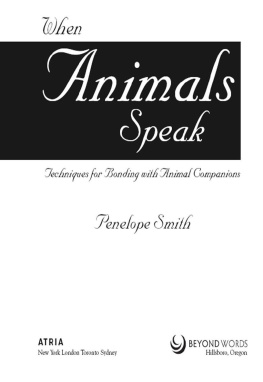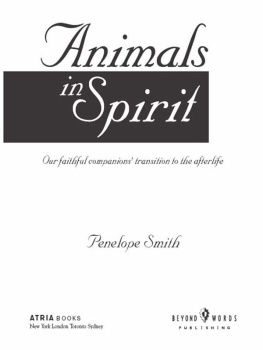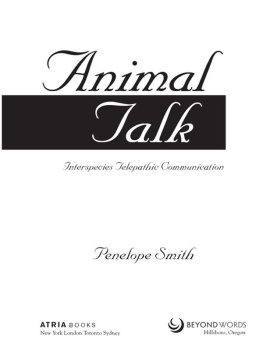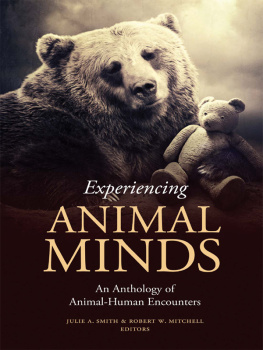Appendix
I n 1990, as more of the people who had studied with me and other teachers began to venture out as animal communicators, I observed some novices mixing their communication abilities with their own agendas or emotional shortcomings, invalidating people through their interpretations of what the animals communicated. I could not and did not want to police or control the actions of others, yet I felt responsible for helping them on the path they had chosen, and I wanted to offer some beacon to guide the way. I meditated and prayed for guidance, and what came about was the following Code of Ethics.
CODE OF ETHICS FOR INTERSPECIES TELEPATHIC COMMUNICATORS
Our motivation is compassion for all beings and a desire to help all species understand each other betterparticularly to help restore the lost human ability to freely and directly communicate with other species.
We honor those that come to us for help, not judging, condemning, or invalidating them for their mistakes or misunderstanding, but honoring their desire for change and harmony.
We know that to keep this work as pure and harmonious as possible requires that we continually grow spiritually. We realize that telepathic communication can be clouded or overlaid by our own unfulfilled emotions, critical judgments, or lack of love for self and others. We walk in humility, willing to recognize and clear up our own errors in understanding others communicationhuman and nonhuman alike.
We cultivate knowledge and understanding of the dynamics of human, nonhuman, and interspecies behavior and relationships, to increase the good results of our work. We get whatever education and/or personal help we need to do our work effectively, with compassion, respect, joy, and harmony.
We seek to draw out the best in everyone and increase understanding toward mutual resolution of problems. We go only where we are asked to help, so that others are receptive and we truly can help. We respect the feelings and ideas of others and work for interspecies understandingnot pitting one side against another but walking with compassion for all. We acknowledge the things that we cannot change and continue where our work can be most effective.
We respect the privacy of people and animal companions we work with, and honor their desire for confidentiality.
While doing our best to help, we allow others their own dignity, and help them to help their animal companions. We cultivate understanding and ability in others, rather than dependence on our ability. We offer people ways to be involved in understanding and growth with their fellow beings of other species.
We acknowledge our limitations, seeking help from other professionals as needed. It is not our job to name and treat diseases, and we refer people to veterinarians for diagnosis of physical illness. We may relay animals ideas, feelings, pains, and symptoms as they describe them, or as we feel or perceive them, and this may be helpful to veterinary health professionals. We may also assist through handling of stresses, counseling, and other gentle healing methods. We let clients decide for themselves how to work with healing their animal companions distress, disease, or injury, given all the information available.
The goal of any consultation, lecture, course, or interspecies experience is more communication, balance, compassion, understanding, and communion among all beings. We follow our heart, honoring the spirit and life of all beings as One.
A Note from Penelope
M y animal family members mentioned in this book have all passed on except for Sherman, orange tabby cat extraordinaire, who at the time of publication of the latest edition in 2009 is a grand elder cat of twenty-one years. My former husband, Michel, and I separated in 1996. I moved from Inverness/Point Reyes Station, my former home of twenty-two years on the California coast, to live in Prescott, Arizona, in 2006. I currently reside in a log cabin I call Buffalo Spirit Lodge with my two dogs, Belinda and Rajah, and cat Sherman. Also present, in the garden coop, are my lovely flock of bantam chickens. You can see photos of my home and animal friends on my website www.animaltalk.net.
Who Animals Really Are
In the beginning of all things, wisdom and knowledge were with the animals, for Tirawa, the One Above, did not speak directly to man. He sent certain animals to tell men that he showed himself through the beasts, and that from them, and from the stars and the sun and the moon, man should learn.
Pawnee chief Letakota-Lesa
THE ESSENTIAL CONNECTION
T he cornerstone of my work and the positive results I have experienced with animals over the years has been my connection with them as total beings. The acknowledgment of their essential spiritual nature has formed the core of our ability to understand each other. Nonhuman animals are not lower forms of life, living with only automatic reactions or stimulus-response programming.
Yes, animals are different from humans. Various species have unique bodies, genetic backgrounds, and senses, and therefore they experience the world in their own particular ways. They are also individuals who combine their physical species nature with their own unique mental and spiritual qualities, and with an awareness to express themselves and fulfill their purposes in this universe.
Approaching animals as objects or biological forms does not promote the deep understanding and equitable relationship that become possible when we overcome our culturally ordained perceptions and allow ourselves to become fully aware of their physical, mental, and spiritual natures. While its good to study the biology and behavior books to learn about animals general and species-specific needs and patterns, this will not tell you all about an individuals particular personality, ideas, hopes, purposes, and dreams. You cant separate the physical from the spiritual aspect of a living being. We need to recognize the whole being when we approach an animal of any species.
When you make the spiritual connection, its almost as if bodies disappear. They can be seen as vehicles of life in the physical and individual expressions of divine creation. When the essential, spiritual contact is madebeing to beingrecognition of likeness, even oneness, occurs. It is magical to feel this deep affinity and respect. It engenders open communication, trust, and understanding.
This type of relationship is not based on sentimentality, nor can it come about if we treat animals as babies or dependent underlings. It is a blend of compassion and kinship. If you have experienced this kind of soulful communion with another creature of any kind (including human), you are, by your approach or attitude, acknowledging your union or commonality as spiritual beings. Even if you dont think about it or phrase it in these terms, the animals know.
This doesnt mean that every animal is going to fall at your feet, be calm in your presence, or even want to communicate with you. Animals make their own choices, and they have their conditioned fears plus their own personal experiences. Their first response may be to flee or attack according to their biological chemistry and their function in natures pattern.
Some animals will be more aware of you as a spiritual being and have more ability to connect with you. Others dont particularly want or see the need to relate to humans or any other species. However, I have found that if you remain quiet and attentive, but unobtrusive, respectful, and willing to make a connection, most animals will be interested or at least be willing to accept you as a part of their environment.
Domesticated animals that have experienced humans positively all their lives dont view humans as predators, and so they can often communicate with humans more easily. You may find it easier to connect with companion animals than with wild creatures you have never met. Experiencing both can be a pleasure and a privilege. To have a wild animal accept your human presence and connect with you as a kindred spirit is a deep honor.









